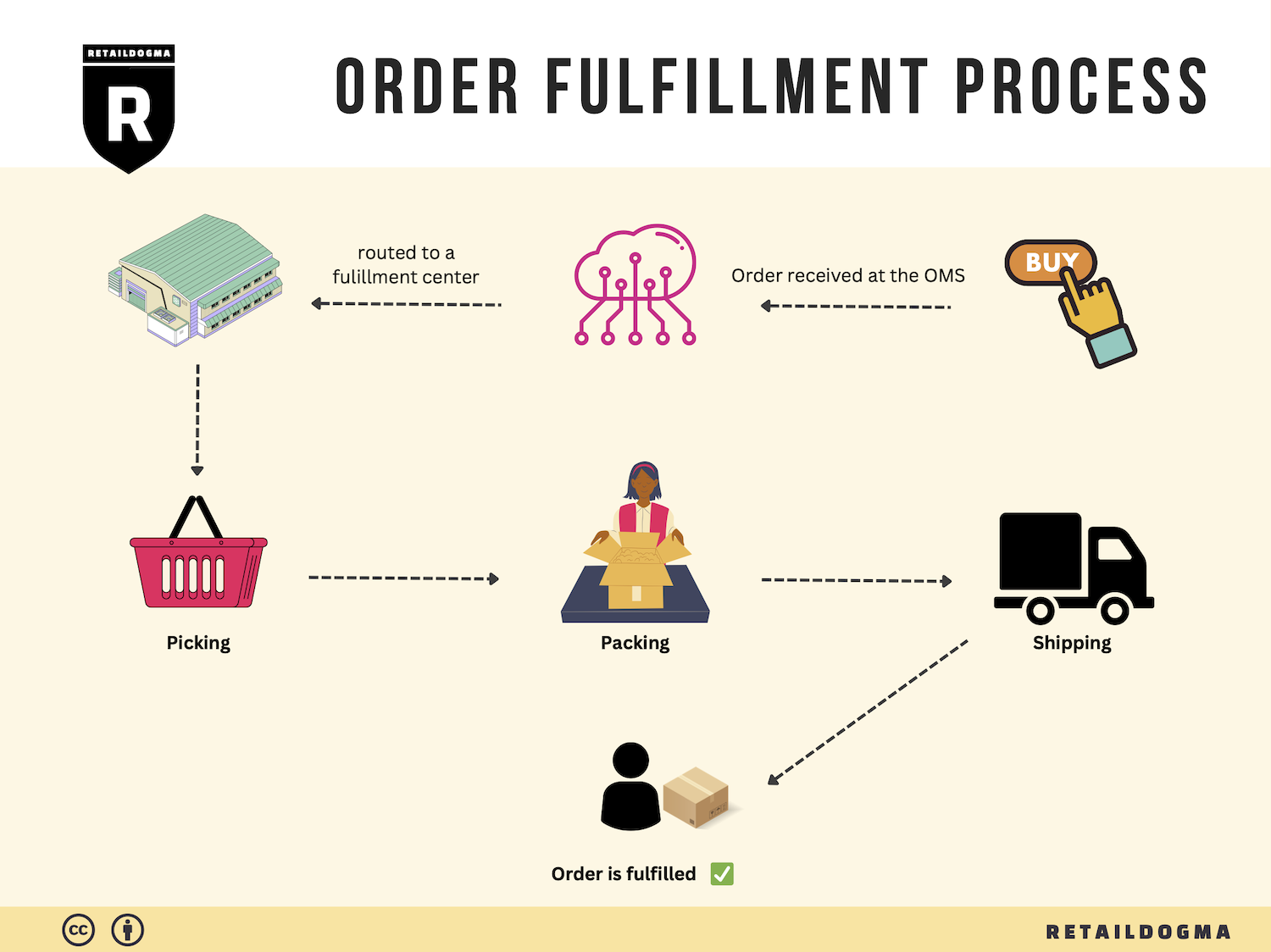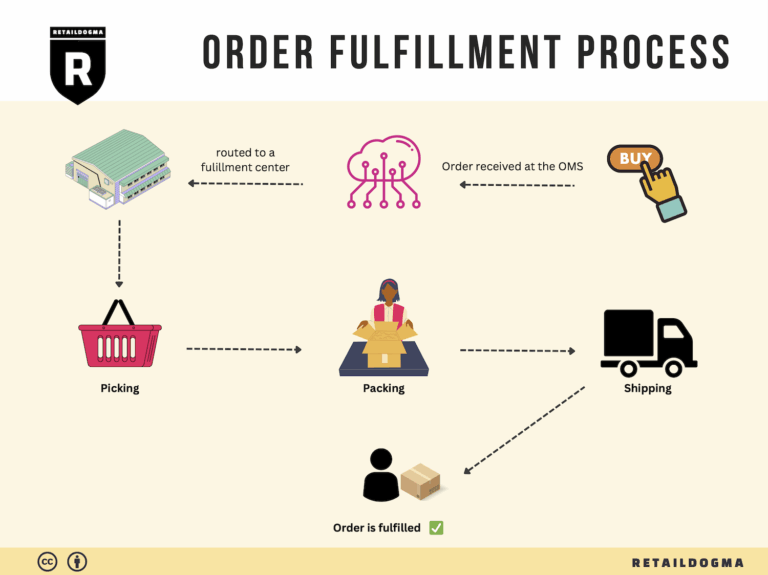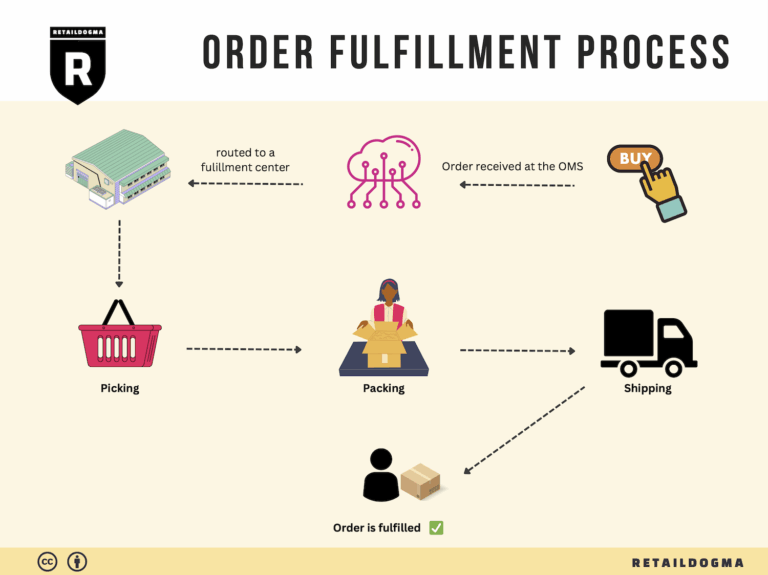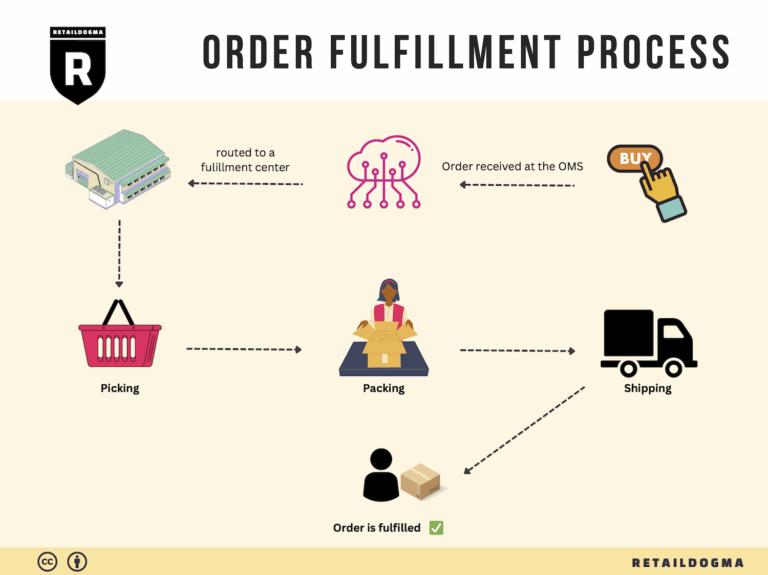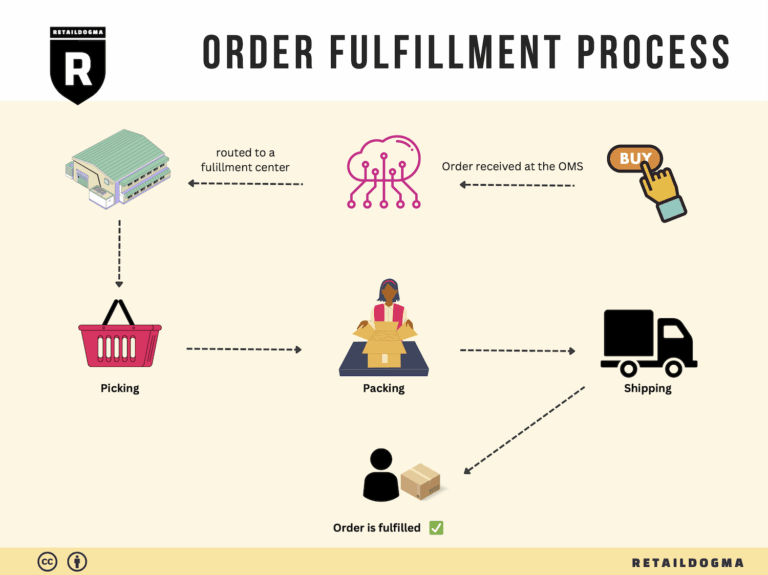What Is A Fulfillment Center? A Complete Guide (2025)
What is E-commerce Fulfillment? An Introduction for Growing Businesses
Understanding the Fulfillment Process
As an e-commerce business owner, you may find yourself drowning in the complexities of packing and shipping orders. This overwhelming burden can hinder your growth and distract you from the core aspects of your business, such as marketing and product development. The fulfillment process, simply defined, is the journey of getting a product from your warehouse to your customer’s doorstep. This may seem straightforward, but as your business scales, the intricacies of fulfillment can quickly multiply.
The Importance of E-commerce Fulfillment
Effective fulfillment is crucial for enhancing customer satisfaction and loyalty. In today’s fast-paced e-commerce landscape, customers expect quick and reliable delivery. A failure to meet these expectations can lead to negative reviews, lost sales, and ultimately, a decline in your business. Therefore, understanding and optimizing your fulfillment strategy is not just beneficial; it’s essential for survival and growth.
What This Guide Will Cover
In this comprehensive guide, we will explore various fulfillment models, including Third-Party Logistics (3PL) and Fulfillment by Amazon (FBA). You will learn about the core services offered by these models, such as inventory management, order processing, and shipping solutions. We will also discuss how to select the right fulfillment partner for your business, taking into consideration factors like location, service offerings, and scalability.
Additionally, we will break down the pricing structures associated with different fulfillment options, helping you understand the costs involved and how they can impact your bottom line. This knowledge will empower you to make informed decisions that align with your business goals.
Empowering Your Logistics Decisions
The ultimate goal of this guide is to equip you with the knowledge and tools necessary to navigate the often complex world of e-commerce fulfillment. By understanding your options and the implications of each choice, you can implement a fulfillment strategy that not only meets but exceeds customer expectations. As you explore the following sections, you will gain insights that can help streamline your logistics processes, allowing you to focus on what you do best: growing your business.
What You’ll Learn In This Guide
- What is E-commerce Fulfillment? An Introduction for Growing Businesses
- The Order Fulfillment Process: From ‘Buy’ Button to Customer’s Door
- Comparing Fulfillment Models: In-House vs. 3PL vs. Dropshipping
- A Deep Dive into Amazon FBA: Pros, Cons, and Who It’s For
- Core Services Offered by Fulfillment Centers
- How to Choose a Fulfillment Partner: A 6-Point Checklist
- Understanding Fulfillment Pricing: A Breakdown of Common Fees
- Frequently Asked Questions (FAQs) about Fulfillment
- Conclusion: Is Outsourcing Fulfillment the Right Move for Your Business?
- Important Disclaimer
The Order Fulfillment Process: From ‘Buy’ Button to Customer’s Door
1. Receiving Inventory
The order fulfillment process begins with receiving inventory, which is the crucial first step in ensuring that products are available for customer orders. During this stage, goods arrive at the fulfillment center and are checked against the purchase orders to confirm that the correct items and quantities have been delivered. This process involves scanning the products using a barcode scanner, which associates each item with a specific Stock Keeping Unit (SKU).
Importance: Proper inventory receiving is essential for maintaining accurate stock levels and preventing discrepancies that can lead to stockouts or overstock situations. By utilizing SKUs, businesses can efficiently track inventory movement, manage replenishment, and analyze sales trends.
2. Warehouse Storage
Once inventory is received, it must be stored effectively within the warehouse. Products are organized in designated storage areas based on their SKUs and demand frequency. High-demand items are typically stored in easily accessible locations, while less frequently ordered products may be placed in less accessible areas. Advanced fulfillment centers like Amazon utilize robotics and automated storage systems to optimize space and improve efficiency.
Importance: Efficient warehouse storage minimizes retrieval time and maximizes space utilization, ultimately impacting order fulfillment speed. Properly organized storage systems help reduce labor costs and streamline operations, making it easier to manage inventory levels and fulfill customer orders promptly.
3. Order Picking
The order picking process involves selecting items from the warehouse to fulfill customer orders. Once a customer places an order, a pick list is generated, detailing the specific SKUs and quantities required. Warehouse associates, often assisted by robots or automated systems, retrieve these items from their storage locations. This process can be conducted using various methods, such as single-order picking, batch picking, or zone picking, depending on the fulfillment center’s size and complexity.
Importance: The efficiency of order picking directly influences the overall speed of the fulfillment process. Quick and accurate picking helps ensure that customers receive their orders on time and as expected. Implementing technologies such as voice-picking systems or mobile devices can further enhance accuracy and reduce errors during this stage.
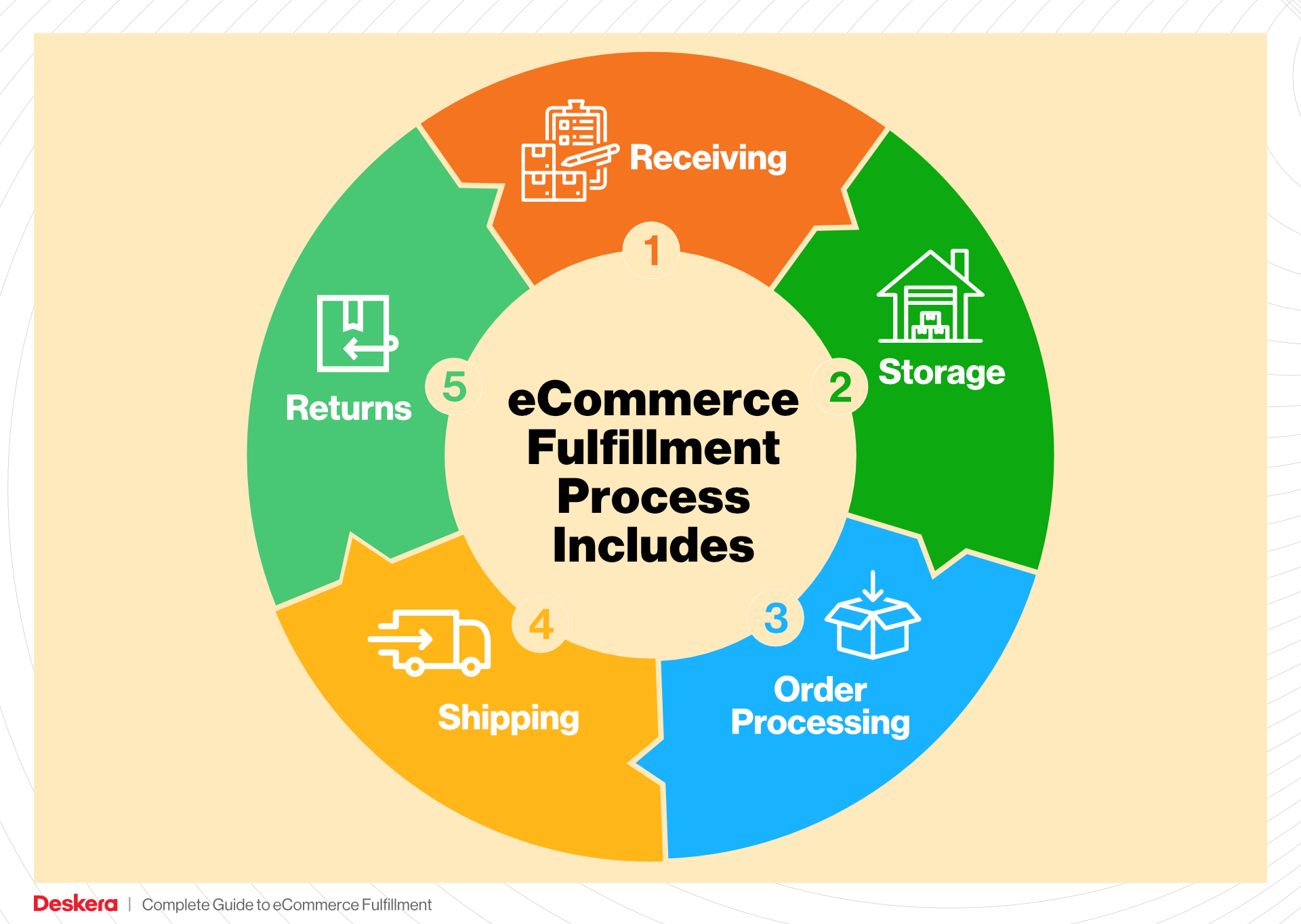
4. Order Packing
Once the items are picked, they move on to the packing stage, where they are prepared for shipment. In this step, products are carefully packed into boxes or envelopes, ensuring they are secure and protected during transit. Packing stations often utilize automated systems for labeling and weighing packages, as well as determining the most cost-effective shipping options based on the destination and package dimensions.
Importance: Effective packing is vital for minimizing damage during shipping and ensuring customer satisfaction upon delivery. An efficient packing process also contributes to cost savings by optimizing shipping materials and selecting the best carriers. Incorporating packing automation can speed up this process and reduce the likelihood of human error.
5. Shipping & Delivery
The final step in the order fulfillment process is shipping and delivery. Once packages are packed, they are labeled and sorted based on their final destination. Fulfillment centers often work with multiple shipping carriers to offer customers various delivery options, including standard, expedited, and same-day shipping. The logistics involved in this step can be complex, requiring real-time tracking and communication with carriers to ensure timely deliveries.
Importance: Shipping and delivery are critical to the customer experience, as they ultimately determine when customers receive their orders. A well-managed shipping process can enhance customer satisfaction and loyalty. Implementing tracking systems that provide real-time updates to customers can further improve the delivery experience, allowing them to stay informed about their order status.
By understanding and optimizing each of these five steps—receiving inventory, warehouse storage, order picking, order packing, and shipping & delivery—e-commerce businesses can significantly enhance their order fulfillment processes, leading to improved customer satisfaction and increased operational efficiency.
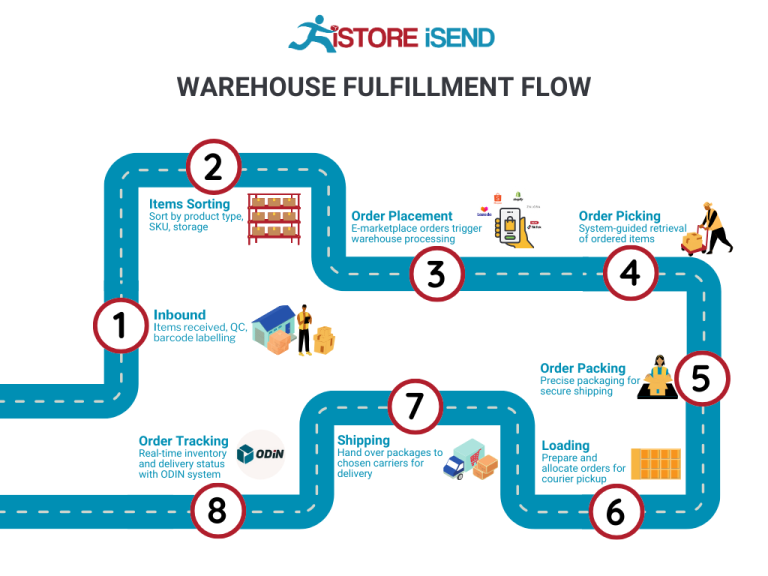
Comparing Fulfillment Models: In-House vs. 3PL vs. Dropshipping
Fulfillment Model Comparison
| Model | Who Handles Inventory | Best For (Business Stage) | Key Advantage | Key Disadvantage |
|---|---|---|---|---|
| In-House Fulfillment | Business itself | Established businesses with stable sales | Full control over inventory and operations | High overhead costs and resource commitment |
| Third-Party Logistics (3PL) | 3PL provider | Startups and growing businesses | Scalability and reduced operational burden | Less control over inventory and fulfillment speed |
| Dropshipping | Supplier | New businesses and niche markets | Low startup costs and minimal risk | Lower profit margins and dependency on suppliers |
In-House Fulfillment
In-house fulfillment refers to a model where a business manages its own inventory, warehousing, and shipping operations. This approach is often adopted by established businesses that have stable sales and sufficient resources to invest in warehouse space, logistics staff, and technology. The primary advantage of in-house fulfillment is the level of control it provides. Businesses can tailor their operations to meet specific customer needs, manage inventory levels closely, and potentially achieve faster shipping times by controlling the entire process. However, this model comes with significant disadvantages, including high overhead costs related to warehousing, labor, and technology. Additionally, managing logistics in-house can divert focus from core business activities, particularly for smaller businesses that may not have the capacity to handle these operations efficiently.
Third-Party Logistics (3PL)
Third-party logistics (3PL) involves outsourcing logistics and fulfillment operations to specialized providers. This model is particularly beneficial for startups and growing businesses that want to scale without the burden of managing logistics themselves. 3PL providers typically offer a range of services, including warehousing, inventory management, order fulfillment, and shipping, allowing businesses to focus on sales and marketing. The key advantage of using a 3PL is scalability; businesses can easily adjust their logistics needs based on demand without incurring the fixed costs associated with in-house fulfillment. However, one of the main disadvantages is the reduced control over inventory and fulfillment processes. Businesses may face challenges in ensuring that their brand standards are met and that orders are fulfilled accurately and promptly, which can affect customer satisfaction.
Dropshipping
Dropshipping is a fulfillment model where a business sells products it does not physically stock. Instead, when a customer makes a purchase, the order is forwarded to a supplier who then ships the product directly to the customer. This model is ideal for new businesses and those operating in niche markets, as it requires minimal upfront investment and allows entrepreneurs to test various products without the risk of unsold inventory. The primary advantage of dropshipping is the low startup costs and minimal risk involved; businesses do not need to invest in inventory or warehouse space. However, dropshipping also has significant drawbacks, including lower profit margins due to reliance on suppliers and potential shipping delays that can occur if the supplier is overwhelmed. Furthermore, businesses are heavily dependent on their suppliers for inventory quality and order fulfillment, which can impact the overall customer experience.
Conclusion
In choosing a fulfillment model, e-commerce businesses must carefully consider their specific needs, resources, and long-term goals. In-house fulfillment offers control but at a higher cost, while 3PL provides scalability and operational ease but with less control. Dropshipping minimizes risk and investment but can lead to lower profit margins and dependency on third-party suppliers. By weighing the pros and cons of each model, business owners can select the approach that best aligns with their operational strategy and customer service expectations.
A Deep Dive into Amazon FBA: Pros, Cons, and Who It’s For
Understanding Fulfillment by Amazon (FBA)
Fulfillment by Amazon (FBA) is a service provided by Amazon that allows e-commerce sellers to store their products in Amazon’s fulfillment centers. Amazon takes care of storage, packaging, and shipping, as well as customer service and returns. By leveraging Amazon’s extensive logistics network, sellers can focus on other aspects of their business while Amazon handles the logistics.
When a customer places an order for a product fulfilled by FBA, Amazon picks, packs, and ships the product directly to the customer. This service not only streamlines the fulfillment process but also allows sellers to offer Amazon Prime eligibility on their products, which can significantly increase sales.
How FBA Works
-
Product Listing: Sellers create product listings on Amazon’s platform and choose to enroll their products in FBA.
-
Shipping Inventory: Sellers ship their products to Amazon’s fulfillment centers. Amazon provides guidelines on how to prepare and package items to ensure they are ready for storage and shipping.
-
Storage: Once received, products are stored in Amazon’s warehouses until sold. Amazon’s sophisticated inventory management system tracks stock levels and can alert sellers when inventory runs low.
-
Order Fulfillment: When a customer places an order, Amazon’s system automatically processes it. The item is picked from storage, packed, and shipped to the customer, often within a day or two.
-
Customer Service: Amazon handles all customer inquiries and returns for FBA products, providing a seamless experience for both the seller and the buyer.
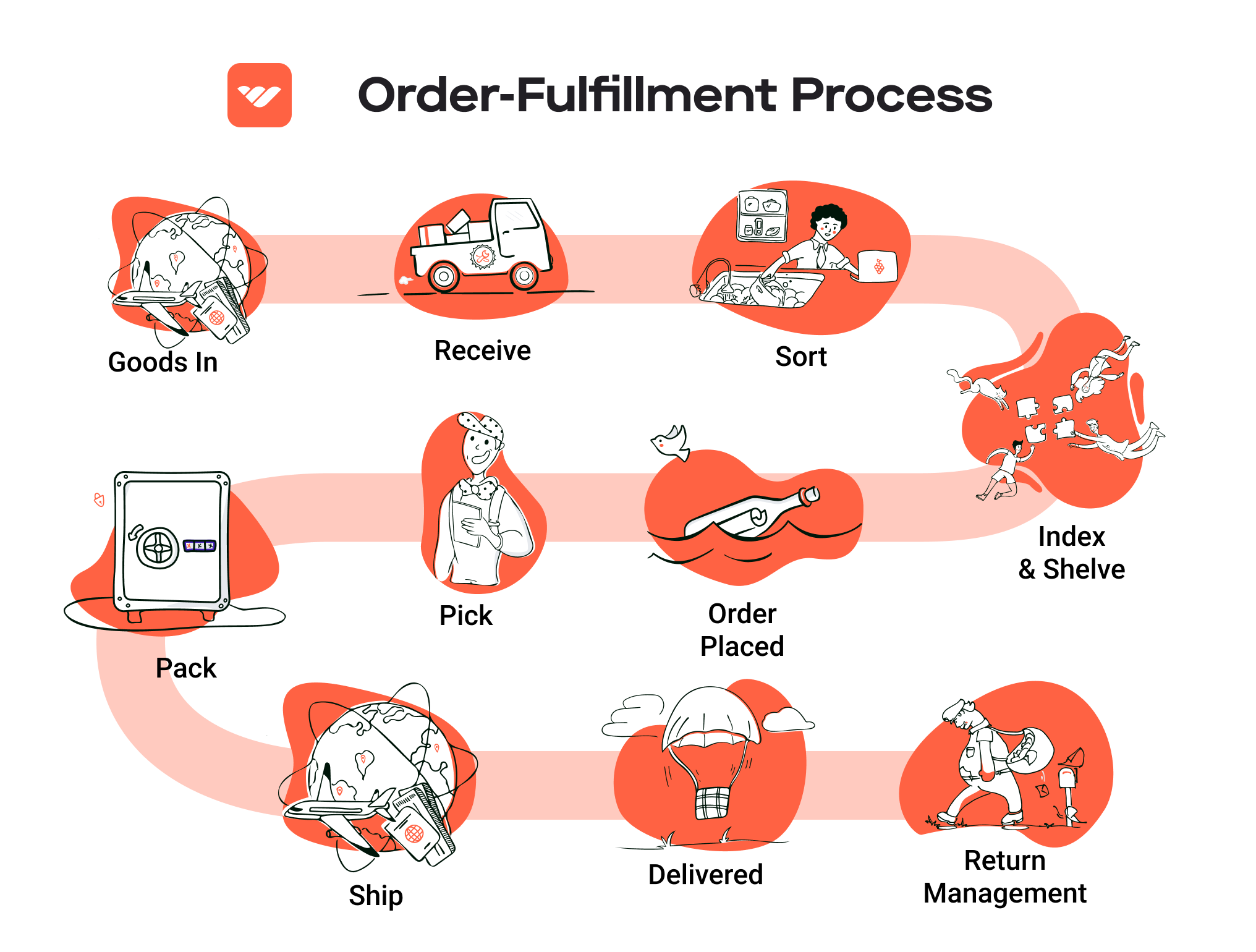
-
Payments: Sellers receive payments for their sales after Amazon deducts fees associated with storage and fulfillment.
Pros of Fulfillment by Amazon (FBA)
Prime Eligibility
One of the most significant advantages of using FBA is the ability to offer products with Amazon Prime eligibility. Prime members often prefer products that qualify for free two-day shipping, which can dramatically boost a seller’s visibility and sales.
Customer Trust
Products fulfilled by Amazon are associated with Amazon’s trusted brand. Buyers feel more secure purchasing FBA products due to Amazon’s reputation for customer service and reliable shipping. This trust can lead to higher conversion rates.
Multi-Channel Fulfillment
FBA allows sellers to utilize Amazon’s fulfillment capabilities across multiple channels. Sellers can fulfill orders from their own websites or other platforms using the same Amazon inventory. This flexibility can streamline operations and reduce overhead costs.
Scalability
FBA enables sellers to scale their operations without the need to invest heavily in warehousing and logistics. As sales grow, sellers can ship larger quantities to Amazon’s fulfillment centers, allowing for efficient order processing and management.
Simplified Returns Management
Amazon handles returns for FBA products, relieving sellers of the burden of managing returns themselves. This feature is especially beneficial for small businesses that may not have the resources to handle returns effectively.
Cons of Fulfillment by Amazon (FBA)
High Fees
While FBA provides numerous benefits, it also comes with various fees that can eat into profit margins. Sellers must pay for storage, fulfillment, and additional services, which can add up, especially for low-margin products.
Strict Inventory Rules
Amazon has stringent inventory management policies, including limitations on how much inventory can be stored at their fulfillment centers. Sellers must be diligent in managing their stock levels to avoid incurring long-term storage fees or having their products removed.
Commingling Risks
FBA uses a commingling system where inventory from different sellers may be stored together. This can lead to issues if products are damaged or if there are quality concerns. If a seller’s inventory is mixed with others, it may be difficult to ascertain the source of any problems.
Limited Control
Sellers relinquish control over the fulfillment process when they opt for FBA. This can be a disadvantage for businesses that prefer to manage their own logistics and customer service. Additionally, any issues with shipping or customer service are handled by Amazon, which can lead to a lack of direct communication with customers.
Complexity in Returns
While Amazon handles returns, the process can be complex, especially if sellers need to manage their inventory based on returns. Understanding how returns affect stock levels and potential fees can require additional oversight.
Who is FBA Best For?
Fulfillment by Amazon is best suited for:
-
Small to Medium-Sized Sellers: Businesses that lack the infrastructure to manage warehousing and logistics can benefit from FBA’s streamlined process.
-
Sellers with High Sales Volume: Businesses that can sell in large quantities will find FBA advantageous due to the efficiency of Amazon’s fulfillment network.
-
E-commerce Entrepreneurs Looking to Scale: For those looking to grow their sales without investing heavily in logistics, FBA offers a scalable solution.
-
Brands Seeking Amazon Prime Status: Sellers who want to tap into the Prime customer base will find FBA essential for gaining visibility and trust.
-
Multi-Channel Sellers: Businesses selling on multiple platforms can use FBA to simplify their logistics, making it easier to fulfill orders across different sales channels.
In conclusion, Fulfillment by Amazon can be a powerful tool for e-commerce businesses looking to simplify their logistics and expand their reach. However, potential users should carefully weigh the pros and cons, considering their specific business needs and goals before making a decision. By understanding the intricacies of FBA, sellers can better position themselves to leverage this service effectively.
Core Services Offered by Fulfillment Centers
Inventory Management & Warehousing
Inventory management and warehousing are foundational services provided by fulfillment centers, playing a crucial role in the operational efficiency of e-commerce businesses. This service involves the systematic tracking of inventory levels, orders, sales, and deliveries. Fulfillment centers utilize advanced inventory management systems that integrate seamlessly with e-commerce platforms, allowing for real-time visibility of stock levels and automatic updates.
Benefits:
1. Optimized Stock Levels: By maintaining optimal stock levels, businesses can reduce carrying costs and minimize the risk of stockouts or overstock situations. This balance ensures that customers receive their orders promptly, enhancing their shopping experience.
-
Scalability: As businesses grow, fulfillment centers can easily accommodate increased inventory without the need for significant investment in physical space or technology. This scalability allows e-commerce entrepreneurs to focus on expanding their product lines or entering new markets without the logistical burden.
-
Data-Driven Decisions: Advanced inventory management systems provide valuable analytics and reporting capabilities. E-commerce businesses can leverage this data to make informed decisions about purchasing, marketing strategies, and product offerings based on actual sales trends.
Pick and Pack Services
Pick and pack services are integral to the fulfillment process, where items are selected from the warehouse (picked) and then packaged for shipment (packed). Fulfillment centers employ sophisticated technology, including barcode scanning and automated picking systems, to ensure accuracy and efficiency in this process.
Benefits:
1. Speed and Accuracy: Automated systems reduce human error and increase the speed at which orders are processed. This efficiency is vital for maintaining customer satisfaction, especially during peak shopping seasons.
-
Customized Packaging: Fulfillment centers often offer customizable packaging solutions that can enhance brand visibility. By allowing businesses to use branded boxes or unique packaging materials, e-commerce companies can create a memorable unboxing experience for customers.
-
Cost-Effective Solutions: By outsourcing pick and pack services to fulfillment centers, businesses can save on labor costs associated with hiring and training staff. Fulfillment centers have established processes that streamline operations, resulting in lower overhead expenses.
Kitting and Assembly
Kitting and assembly refer to the process of combining multiple items into a single package or kit, which is often essential for products that require assembly or bundling before shipping. This service is particularly beneficial for e-commerce businesses offering gift sets, subscription boxes, or products that are sold as complete kits.
Benefits:
1. Enhanced Product Offerings: Kitting allows businesses to create unique product offerings that can differentiate them in a competitive market. For example, a company can bundle complementary items together, creating value for customers and increasing average order value.
-
Streamlined Operations: By outsourcing kitting and assembly to fulfillment centers, businesses can streamline their supply chain. This efficiency reduces the time and resources required to prepare orders for shipment, allowing companies to focus on core business activities.
-
Improved Customer Experience: Well-organized kits that are thoughtfully assembled can enhance the overall customer experience. Ensuring that all components are included and correctly packaged minimizes returns and increases customer satisfaction.
Returns Management (Reverse Logistics)
Returns management, or reverse logistics, is a critical service offered by fulfillment centers that involves the processing of returned products. This service includes the evaluation, refurbishment, and reintegration of returned items back into inventory or their disposal when necessary.
Benefits:
1. Customer Retention: Efficient returns management can significantly improve customer satisfaction and loyalty. By providing a seamless return process, businesses can mitigate the negative impact of returns, encouraging repeat purchases.
-
Cost Savings: Fulfillment centers can help e-commerce businesses minimize losses associated with returns through effective processing and refurbishment strategies. By quickly reintegrating returned products into inventory, businesses can recover costs and reduce waste.
-
Data Insights: Analyzing return data can provide valuable insights into product performance and customer preferences. E-commerce businesses can use this information to make informed decisions about product quality, marketing strategies, and inventory planning.
In conclusion, leveraging the core services offered by fulfillment centers allows e-commerce businesses to enhance operational efficiency, improve customer satisfaction, and scale effectively. By understanding and utilizing these services, entrepreneurs can focus on growing their brand while ensuring their logistics and fulfillment processes are managed expertly.
How to Choose a Fulfillment Partner: A 6-Point Checklist
Location & Warehouse Network
Importance: The geographical location of your fulfillment partner’s warehouses is crucial for ensuring timely delivery to your customers. A strategically placed partner can significantly reduce shipping times and costs, enhancing customer satisfaction.
Questions to Ask:
– Where are your fulfillment centers located, and how do they align with my target customer base?
– What is your average shipping time for orders going to different regions?
– Do you have a network of warehouses that allows for quick distribution across the country or internationally?
Technology & Integrations
Importance: In today’s fast-paced e-commerce environment, technology is a game-changer. A fulfillment partner should have robust systems in place for inventory management, order processing, and shipping logistics. Seamless integration with your e-commerce platform is essential for real-time data exchange.
Questions to Ask:
– What technology do you use for order management and inventory tracking?
– Can your system integrate with my existing e-commerce platform (e.g., Shopify, WooCommerce, Amazon)?
– Do you provide real-time tracking for shipments, and how do you communicate updates to both me and my customers?
Specializations (e.g., cold storage, oversized items)
Importance: Different businesses have unique fulfillment needs. If you sell perishable goods, oversized items, or fragile products, it’s critical to partner with a fulfillment center that specializes in those areas. This ensures that your products are stored and handled correctly, minimizing the risk of damage.
Questions to Ask:
– Do you have specialized facilities for handling specific types of products (e.g., temperature-controlled storage for food items)?
– What processes do you have in place to ensure the safe handling and storage of fragile or oversized items?
– Can you provide case studies or references from similar businesses that have utilized your specialized services?
Scalability & Capacity
Importance: As your business grows, your fulfillment needs will evolve. Your partner should have the capacity to scale operations in line with your business growth. This includes having the ability to handle seasonal spikes in demand without compromising service quality.
Questions to Ask:
– What is your current capacity for order fulfillment, and how do you manage peak seasons?
– How quickly can you scale up operations if my order volume increases?
– Do you have a history of successfully managing rapid growth for other clients? Can you share examples?
Pricing and Contracts
Importance: Understanding the pricing structure is vital to maintaining your profit margins. Look for transparency in pricing and ensure you understand all potential costs, including hidden fees for storage, handling, or shipping.
Questions to Ask:
– Can you provide a detailed breakdown of your pricing model?
– Are there any additional fees I should be aware of (e.g., for returns, special handling, or storage)?
– What are the terms of the contract, and is there flexibility for adjustments if my needs change?
Customer Support & Reviews
Importance: Exceptional customer support can differentiate a fulfillment partner from the competition. Your partner should be responsive and proactive in addressing issues that may arise. Additionally, checking reviews and references can provide insight into their reliability and performance.
Questions to Ask:
– What customer support services do you offer, and how can I reach you if issues arise?
– Can you provide testimonials or case studies from current or past clients?
– How do you handle issues such as order discrepancies or delays? What is your typical response time?
Conclusion
Choosing the right fulfillment partner is a critical decision that can significantly impact your business’s success. By following this checklist, you can assess potential partners more effectively and ensure that they align with your operational needs and growth objectives. Take the time to ask these questions, gather information, and weigh your options carefully to make an informed choice that supports your e-commerce strategy.
Understanding Fulfillment Pricing: A Breakdown of Common Fees
Initial Setup Fees
When partnering with a fulfillment center, many providers will charge an initial setup fee. This fee often covers the costs associated with integrating your systems with the fulfillment center’s technology, establishing your account, and preparing your inventory for processing. The setup process may include software integration, creating unique barcodes for your products, and configuring your shipping preferences.
Calculation: Initial setup fees can vary widely based on the complexity of your needs and the fulfillment provider’s pricing structure. Expect to pay a one-time fee that can range from a few hundred to several thousand dollars, depending on the scale of your operations and the level of customization required.
Receiving Fees
Receiving fees are charged when your inventory arrives at the fulfillment center. This fee covers the labor and resources needed to unload, inspect, and store your products. It is crucial that the receiving process is efficient to minimize delays in getting your products ready for sale.
Calculation: These fees are typically calculated per unit or per pallet. For example, a fulfillment center might charge $0.50 per item received or $25 per pallet. The total cost will depend on the volume of products you are sending and the specific policies of the fulfillment center.
Storage Fees (per pallet/bin)
Storage fees are incurred for keeping your inventory in the fulfillment center. These fees can be charged on a monthly basis and are generally based on the amount of space your inventory occupies. Fulfillment centers often use pallets or bins as the standard unit for calculating storage costs.
Calculation: Storage fees are usually calculated on a per-pallet or per-bin basis, with rates typically ranging from $10 to $30 per pallet per month, or a flat fee for each bin. It’s important to note that some fulfillment centers may also implement tiered pricing based on the total number of pallets or bins stored, where the rate decreases as the volume increases.
Pick & Pack Fees (per item/order)
Pick and pack fees are charged for the labor involved in selecting products from the warehouse and packing them for shipment. This is a critical aspect of fulfillment as it directly affects order accuracy and delivery speed. The pick process involves locating the items in the warehouse, while the pack process involves preparing the items for shipment, including boxing, labeling, and sealing.
Calculation: These fees are generally calculated on a per-item or per-order basis. For instance, a typical fee might be $1 per item picked and packed, or a flat fee of $3 to $5 per order, regardless of the number of items included. The total cost will depend on the complexity of the order and the specific pricing structure of the fulfillment provider.
Shipping Fees
Shipping fees encompass the costs associated with sending your products to customers. These fees can vary based on several factors, including the shipping method selected, the destination, and the weight and dimensions of the package.
Calculation: Shipping fees are typically calculated based on the carrier’s rates, which can be influenced by the service level (standard, expedited, etc.) and the distance to the delivery location. Many fulfillment centers offer discounted shipping rates through partnerships with major carriers, which can help reduce your overall shipping costs. It’s essential to understand the fulfillment center’s shipping options and how they impact your pricing.
Tips for Getting an Accurate Quote
-
Understand Your Needs: Clearly outline your fulfillment requirements, including expected order volumes, product types, and shipping destinations. This information will help fulfillment centers provide more tailored quotes.
-
Request Detailed Pricing: Ask for a breakdown of all potential fees, including any ancillary charges that may arise, such as return handling or special packaging requests.
-
Compare Multiple Providers: Obtain quotes from several fulfillment centers to compare pricing structures and service offerings. Don’t just focus on the lowest price; consider the quality of service and technology as well.
-
Inquire About Discounts: Some fulfillment centers offer discounts based on volume, seasonal fluctuations, or long-term contracts. Be sure to ask about any potential savings.
-
Review Contracts Thoroughly: Before signing any agreements, ensure you fully understand the terms and conditions, especially regarding fees and any potential changes in pricing as your business scales.
By understanding these common fulfillment pricing models and how they are calculated, e-commerce business owners can make informed decisions that align with their operational needs and budget constraints.
Frequently Asked Questions (FAQs) about Fulfillment
1. What is an Amazon Fulfillment Center Tour?
An Amazon Fulfillment Center Tour is an in-person experience where visitors can explore the inner workings of an Amazon warehouse. The tour typically lasts 60-90 minutes and provides insights into how products are stored, picked, packed, and shipped to customers using advanced technology and robotics.
2. What can I expect to see during the tour?
During the tour, you will witness cutting-edge technology in action, including robots transporting goods, conveyor belts moving inventory, and the packing process. You’ll also learn about the roles of employees in fulfilling customer orders and the innovative systems that make Amazon’s logistics efficient.
3. How do I book a tour at the BWI2 Fulfillment Center?
To book a tour at the BWI2 Fulfillment Center, visit the Amazon Tours website. Tours are free, but registration is required in advance. Keep an eye out for newly released tour dates, as spots can fill quickly.
4. What is the difference between a warehouse and a fulfillment center?
A warehouse is primarily a storage space for goods, while a fulfillment center is designed specifically for processing and shipping orders. Fulfillment centers integrate technology and logistics to ensure quick and efficient order delivery, often involving inventory management and shipping operations.
5. What should I wear for the tour?
It is essential to wear appropriate attire for safety and security. Guests should wear flat, closed-toed shoes (no sandals or high heels), long pants, and shirts with sleeves. Loose-fitting clothing and accessories are not permitted.
6. Are children allowed on the tour?
Yes, children aged 6 and older can participate in the tour, but they must be accompanied by a responsible adult. For groups of minors, there should be at least one adult for every ten children. All attendees must adhere to safety guidelines throughout the tour.
7. What is a 3PL, and how does it relate to Amazon Fulfillment?
A 3PL, or third-party logistics provider, is a service that manages logistics for businesses, including warehousing, inventory management, and shipping. While Amazon operates its own fulfillment centers, some e-commerce businesses may choose to partner with 3PLs for flexibility and scalability in their logistics operations.
8. Can I take photos during the tour?
Photography is restricted during the tour. Guests may only take photos in designated areas and are encouraged to leave cell phones in their vehicles or at a secure location provided by Amazon during the tour.
9. How much do fulfillment services cost?
The cost of fulfillment services varies based on several factors, including order volume, storage space, shipping destinations, and additional services (like packing and handling). Businesses should request quotes from fulfillment centers to determine the best pricing structure for their needs.
10. What should I do if I need special accommodations during the tour?
Amazon Fulfillment Centers are accessible facilities. If you require specific accommodations, it’s recommended to contact the Amazon Tours Help Center ahead of your registration to confirm that your needs can be met.
Conclusion: Is Outsourcing Fulfillment the Right Move for Your Business?
Evaluating the Benefits of Outsourcing Fulfillment
Outsourcing your fulfillment operations can be a game changer for e-commerce businesses looking to scale. By leveraging a third-party fulfillment service, you can save valuable time and resources that would otherwise be spent on managing logistics. This allows you to focus on core business activities such as product development, marketing, and customer engagement. With fulfillment services, you gain access to advanced technology and processes that streamline order processing, inventory management, and shipping, ultimately enhancing your customer experience.
One of the most significant advantages of outsourcing fulfillment is scalability. As your business grows, the demands on your logistics operations will increase. A fulfillment partner can easily adapt to fluctuations in order volume, especially during peak seasons, without the need for extensive capital investments in infrastructure or staffing. This flexibility ensures that you can meet customer expectations without compromising service quality or incurring unnecessary overhead costs.
Additionally, partnering with an experienced fulfillment provider offers you access to industry expertise. These professionals understand the nuances of logistics, from international shipping regulations to the latest trends in supply chain efficiency. This expertise can significantly reduce the risks associated with fulfillment errors, delays, and compliance issues.
However, the success of outsourcing fulfillment hinges on choosing the right partner. Assess their technology capabilities, service offerings, and track record to ensure they align with your business goals. A strategic partner can facilitate your growth, while the wrong choice may hinder your operations.
Call to Action
Take the first step towards optimizing your fulfillment process by conducting an audit of your current shipping and logistics operations. Identify pain points, inefficiencies, and growth opportunities. Consider whether a fulfillment partner could alleviate these challenges and support your business’s scaling efforts. A thorough evaluation will provide clarity on whether outsourcing fulfillment is the right move for your business’s future.
Important Disclaimer
⚠️ Important Disclaimer
The information in this guide is for educational purposes. Fulfillment services, pricing, and platform features change frequently. Always conduct your own due diligence and consult with providers directly before making business decisions.
